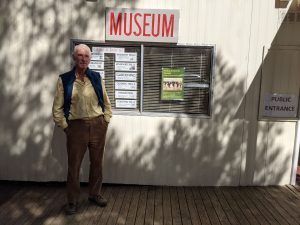Australia: not seeing justice done
BY MEGAN DONOGHUE
IN 2003, during the Melbourne gangland war, the badly burned body of Mark Mallia was dumped in a wheelie bin. When five men were charged with his murder, a cloak of suppression orders prohibited their identities from publication. The Australian public was to know nothing of the names of the defendants involved in gangland trials, any other charges they were facing, prior convictions, or the names of the witnesses, as well as a host of other details.
Basic to the Australian legal discourse is the principle that justice should not only be done, but be seen to be done by the public, usually via the media. Deeply entrenched in our law, the concept of open justice means legal proceedings and information should be open to public view and access, with unrestricted reporting on open court cases. Unrestricted reporting, however, can at times obstruct the administration of justice.
Suppression orders in Australia have been described as being issued too regularly, with an apparent lack of appropriate supporting argument and reasoning behind them. They have been criticised for their scope, duration and precision and Australian courts are becoming seen to be overly zealous in protecting the identities of those who come before them. This does however seem to be largely a South Australian and Victorian problem, and raises questions as to how much do the public have the right to know about what’s going on in its courts. The majority of Australia would have been quite happy to see many people who have enjoyed the protection of court issued suppression orders behind bars. By the same token, however, the media have at times contributed to Australian tragedies; Penny Easton, Lindy Chamberlain and David Hillier being three such examples.
While there is obviously a very fine line between open justice and the right to a fair trial, the apparent increasing willingness of Australian courts to issue suppression orders at the drop of a hat is sacrificing the broader public interest for a few. Lawyer, publisher and media commentator Richard Ackland wrote in early 2006:
“The courts are singularly happy to hand out suppression orders, like lollies to children. While chief justices bemoan the trend, others further down the judicial food chain are not holding back.”
Of suppression orders issued in 2006, 2007 and the first half of 2008, the NSW media was notified of 54, jurisdictionally across NSW.
Northern Territory statistics indicate 48 suppression orders were handed out over the same time period; no statistics are maintained by court registries in Queensland or the ACT.
A 2008 report of the review of suppression orders commissioned by Australia’s right to know, was made aware of one suppression order handed out in Tasmania in recent times.
By stark comparison, South Australian Supreme and District courts from 2006 – June 30 2008 saw 549 orders handed down. Most orders did not cite a date of expiration, neglecting to apply duration to the order by using the term “until further order”.
Despite a requirement to state “full particulars for which the order was made”, many South Australian orders lacked clear reasoning as justification for the suppression.
While the Victorian Supreme Court and the Court of Appeal issued 168 orders between them, and the Magistrates court 219, the Victorian County Court led the way with 240 orders handed down from 2006 – mid 2008.
Over 25 per cent of the 66 suppression orders made in the County Court in the six months to June 30 2008 were blanket prohibition orders stopping all reporting until further order.
Western Australia saw a total of 110 suppression orders recorded in 2006, 102 in 2007 and 75 in the first six months of 2008. 32 per cent of these orders were in sexual assault cases.
While no national pattern emerges, some lawyers suggest that a culture has developed in Victoria in recent years for lawyers to ask for suppression orders. Partner at Minter Ellison Melbourne, Peter Bartlett likened the current situation of suppression orders within Australia to a minefield for journalists and media lawyers.
“According to Marco Bass from the ABC there is something like 1200 suppression orders currently enforced today. Now that is a legal minefield for the media and it is extraordinary how rare it is for the media to breach a suppression order”, he said.
“…a concern is that the media does not have the deep pocket it has had in the past so it isn’t in the same position to challenge a lot of these suppression orders and so the theory is that the number of suppression orders will continue to grow.”
Court reporter for the Canberra Times, Noel Towell, explained that journalists are ready to fight suppression orders which have no reasonable grounds.
“… if you want a suppression order we will oppose them if we think that there are genuine grounds for them to be opposed…I’ve heard of lawyers sitting down with clients and promising that they can keep their names out of the papers, and we don’t want a situation like that developing” he said.
There is no doubt that the media possess, and at times misuse, great social power. Often in the unrestricted reporting of court cases, dangerous, embarrassing or distressing facts may come to light, particularly in terrorism or sexual assault trials.
While the fact that suppression orders are necessary in certain circumstances is not an argument; for instance where not to endanger national or international security, prejudice the administration of justice, endanger physical safety, cause undue distress or embarrassment to complainants in certain sexual offence proceedings, or offend public decency; Peter Bartlett commented that the concept of open justice is gradually being eroded.
“There’s always that conflict between the balance of the public’s right to know and the accused’s right to a fair trial…but I fear that in Victoria in particular, that balance is shifting a little away from open justice.”
William Houghton QC, whose areas of practice include defamation, media and entertainment law, attested that striking such a balance is crucial.
“You’ve got to engage in a balancing exercise, but if it’s truly the case that publication of a matter will tend to have a serious likelihood of interfering with a fair trial, then that’s got to trump the right of the public to know, however I think too many courts assume too readily that a right to a fair trial is going to be somehow prejudiced where it’s not so.”
Media law practitioner from Kelly Hazell Quill lawyers, Justin Quill, believes that is it extremely difficult to prejudice a jury.
“Jury’s do their job… it’s more powerful when you see someone come in to give evidence and potentially be torn apart by cross examination or otherwise really stand up and appear very believable , and ultimately a jury is going to be more influenced by the actual evidence and the words that come out of peoples mouth in front of them than they are about some article…I think nearly all the time they get it right.”
Jury’s are not as fragile as previously supposed, and do not need to be cocooned from the media. Like-wise, Australia is now a digital media environment, where a wide variety of resources and information are readily available. The public is not as susceptible to media which may over sensationalise court proceedings, as they are exposed to a substantial amount of varying opinions, attitudes and viewpoints.
Do we need really suppression orders at all? Some states appear to get by passing very few. Yes judges should have the discretion to carry out their duty to run a fair trial in the public interest, however currently in Victoria, South Australia and Western Australia, a reasonable balance is not being struck between the public’s right to know and the right to a fair trial.
Justice is being administered behind closed doors – ‘secret justice’- when Australia should be physically seeing it done.



Be the first to comment!